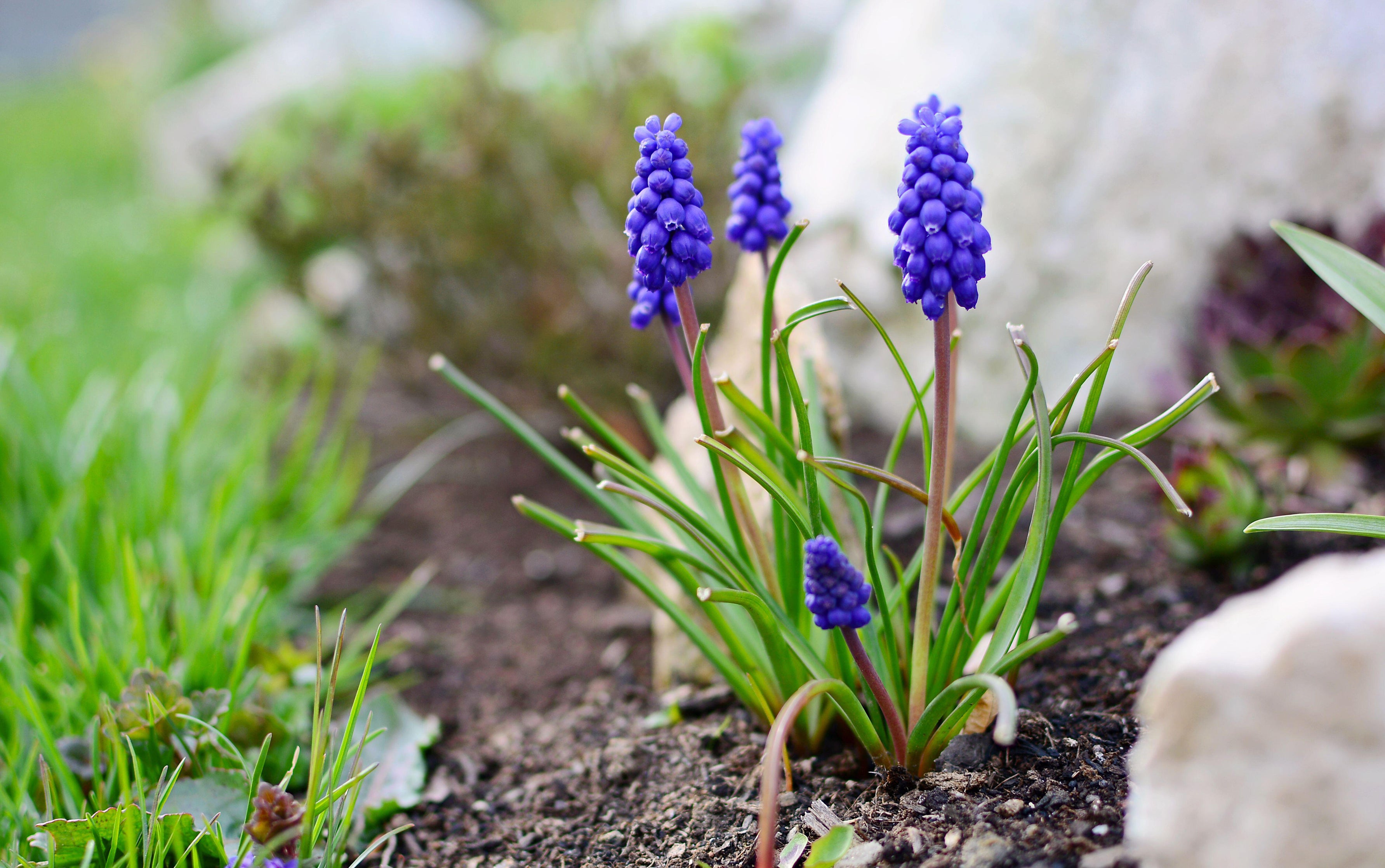Grape hyacinth, also known as muscari, is a small bulb with tight clusters of blue flowers that resemble grapes, and it is also available in colors like white, pink, lavender, or yellow. Grape hyacinth grows best when planted in the fall in a location with full sun or partial shade, offering beautiful spring blooms that grow slowly and emerge with flowers in April or May that last for up to four weeks. Many varieties of grape hyacinths display the rare crystal blue color that many gardeners covet, but they have none of the fussiness that some other blue flowers possess.
The Armenian grape hyacinth (Muscari armeniacum) is a spring-blooming bulb that produces charming clusters of bell-shaped purple, blue, or white flowers. With proper fertilization, these petite beauties will thrive and reward you with vibrant blooms year after year. This guide covers everything you need to know about fertilizing your Armenian grape hyacinths for optimal growth and flowering.
Understanding Armenian Grape Hyacinth’s Nutritional Needs
Like other bulbs, Armenian grape hyacinths need a balanced supply of essential nutrients to support lush foliage growth and prolific blooming. The key macronutrients these plants require include:
- Nitrogen (N) – promotes healthy leaf growth
- Phosphorus (P) – boosts root development and flowering
- Potassium (K) – improves overall plant vigor and resilience
Additionally, micronutrients like iron, magnesium, and calcium play crucial roles in various plant functions Meeting the nutritional requirements of Armenian grape hyacinths is key for stellar performance.
Best Practices for Fertilizing
Follow these best practices when fertilizing your Armenian grape hyacinths
Use the Right Fertilizer Ratio
Select a balanced fertilizer with an NPK ratio around 5-10-10, which is ideal for bulbs. Avoid high nitrogen formulas, as excess nitrogen causes excessive foliage over flowers.
Time Applications Correctly
Fertilize Armenian grape hyacinths in early spring just as new growth emerges. This coincides with active growth and nutrient uptake. Also fertilize lightly after blooming.
Apply Topically Around Plants
Scatter fertilizer evenly around plant bases, then gently scratch in. Never place fertilizer directly on bulbs to prevent burn.
Limit Frequency
Once before growth starts and a light application after blooming is sufficient. Over-fertilizing can cause issues.
Consider Organic Options
Well-aged manure and compost work well too. They provide a slow, steady nutrient release.
Signs of Nutrient Deficiencies
Watch for visual cues indicating Armenian grape hyacinths need particular nutrients:
- Pale leaves – nitrogen deficiency
- Weak stems and roots – low phosphorus
- Yellow leaf edges – potassium deficiency
Adjust fertilizer to provide more of the nutrient needed.
Signs of Excess Nutrients
Over-fertilization can also cause problems, including:
- Foliage burn
- Poor flowering
- Nutrient imbalances
If you suspect excess, flush soil and reduce fertilizer amounts.
Additional Care Tips
Proper fertilization complements other care for robust Armenian grape hyacinths:
- Full sun exposure
- Consistent moisture during growth
- Organic mulch application
- Deadheading spent blooms
- Division of overcrowded clumps
By tailoring your fertilization practices to meet the needs of Armenian grape hyacinths and providing attentive care, you will be rewarded with thriving plants and breathtaking floral displays year after year. This guide equips you with the knowledge to fertilize properly for your grape hyacinth’s optimal health, growth and flowering.

Caring for Grape Hyacinth After It Blooms
No extra care is required for grape hyacinth after it blooms, but gardeners can remove the seed pods that develop after the flowers fade to encourage more blooms during the next growing season.
Temperature and Humidity
Grape hyacinths do nicely in all climate conditions within their USDA hardiness zone range. However, they do require a cool winter period in order to bloom, so unseasonably warm winter temperatures may cause bloom failure the following spring. When grown within its USDA hardiness zone range, grape hyacinth does not require any extra care over the winter.
How to Plant and Grow Hyacinth Bulbs
FAQ
Should I fertilize grape hyacinth?
How to care for grape hyacinths after blooming?
